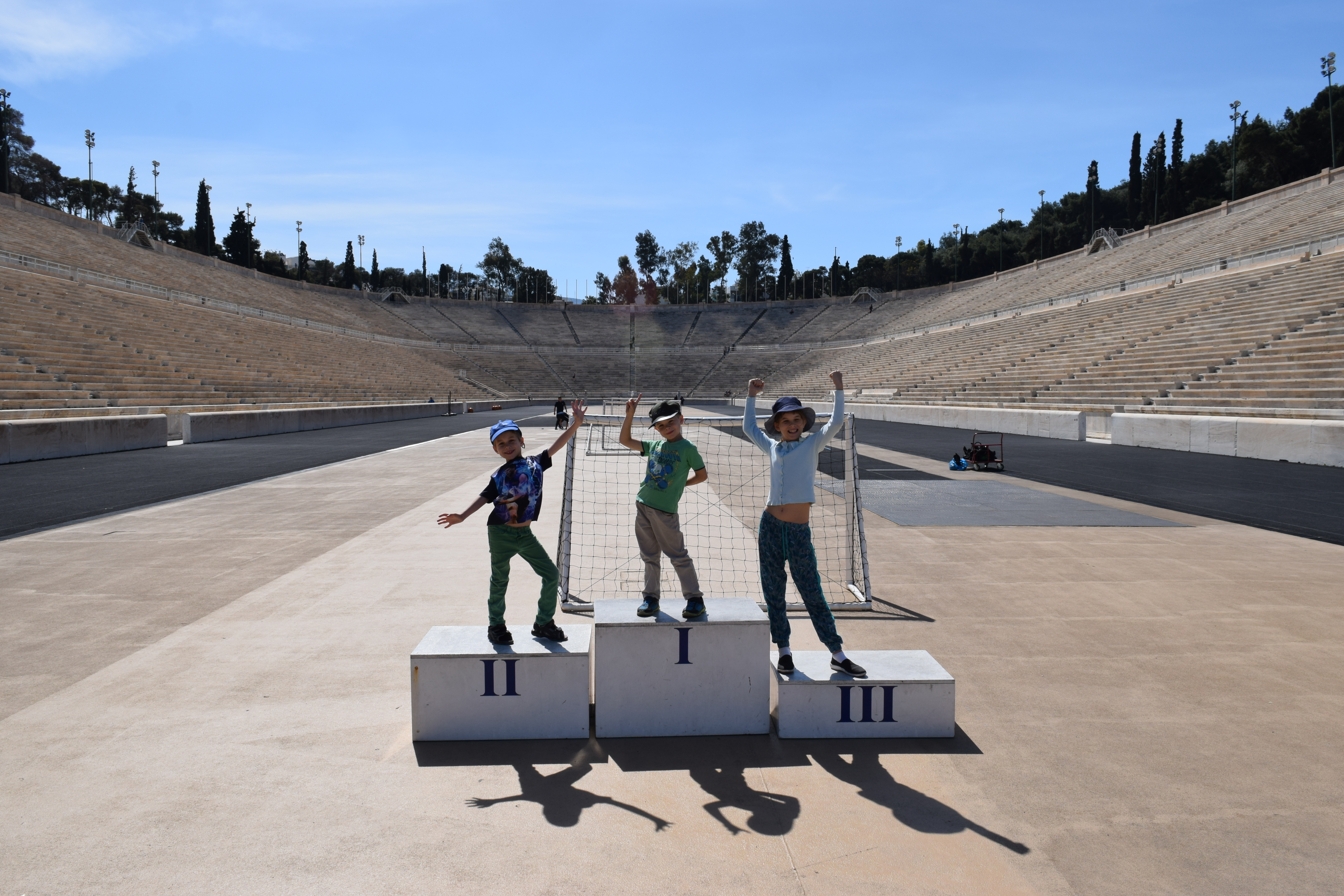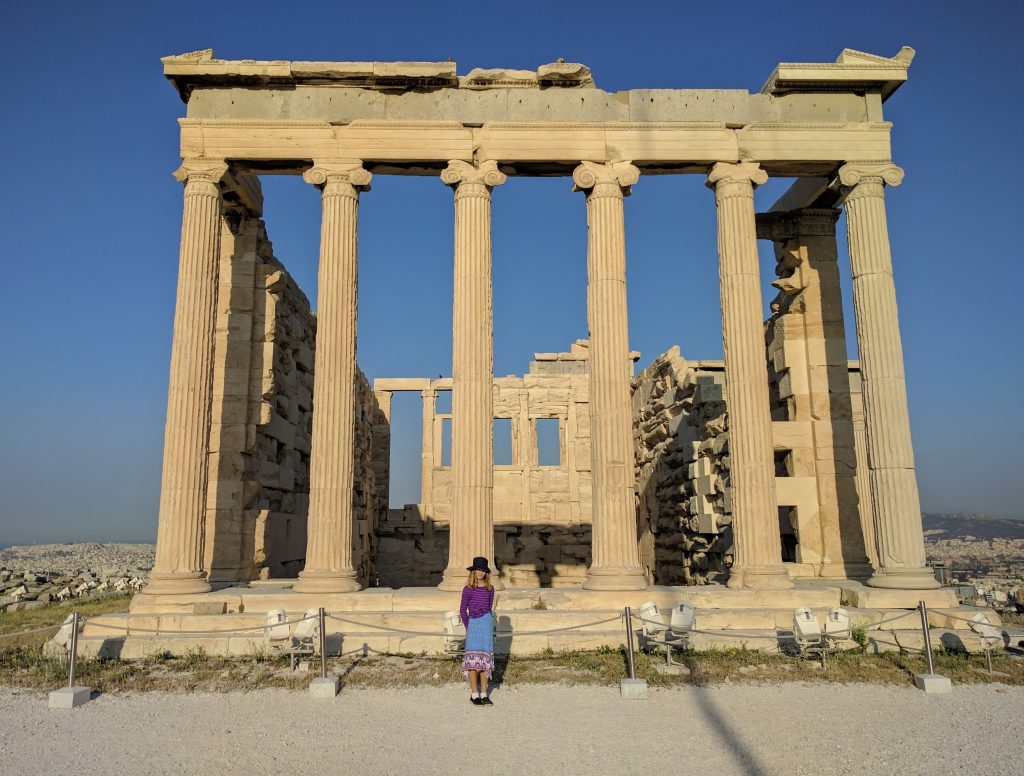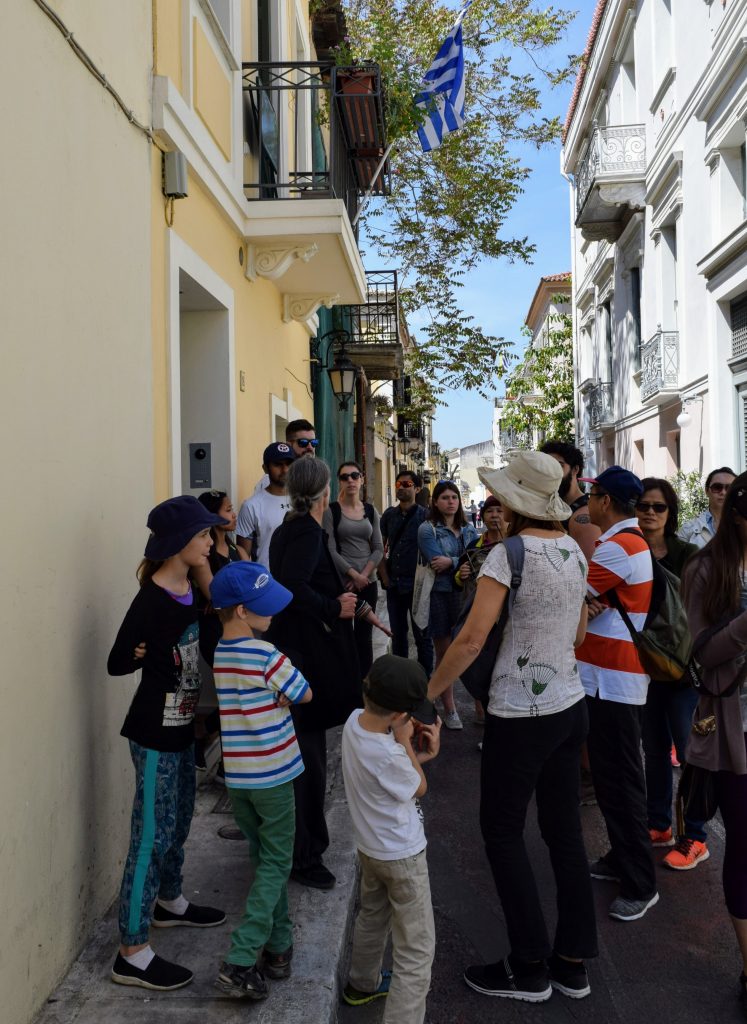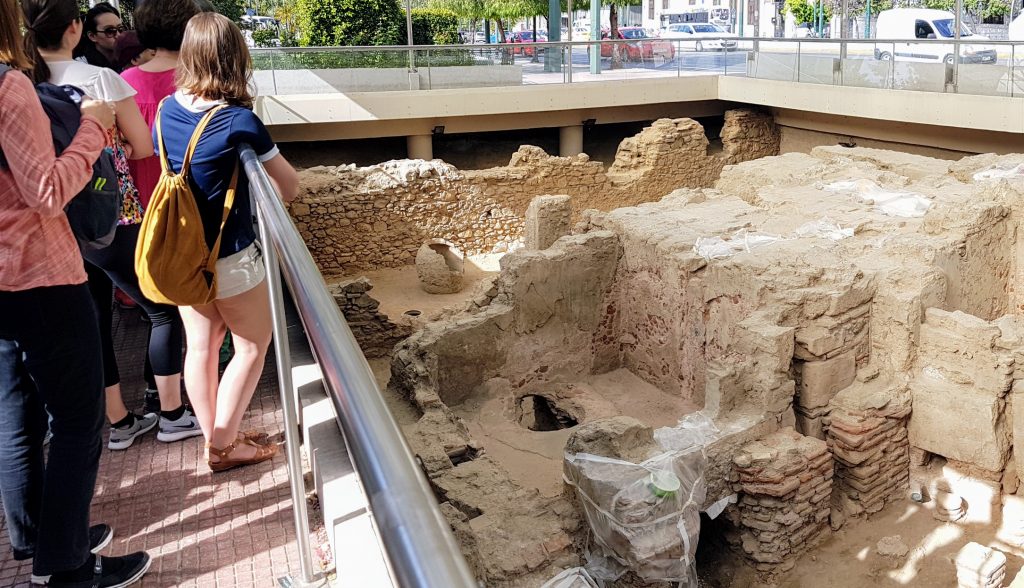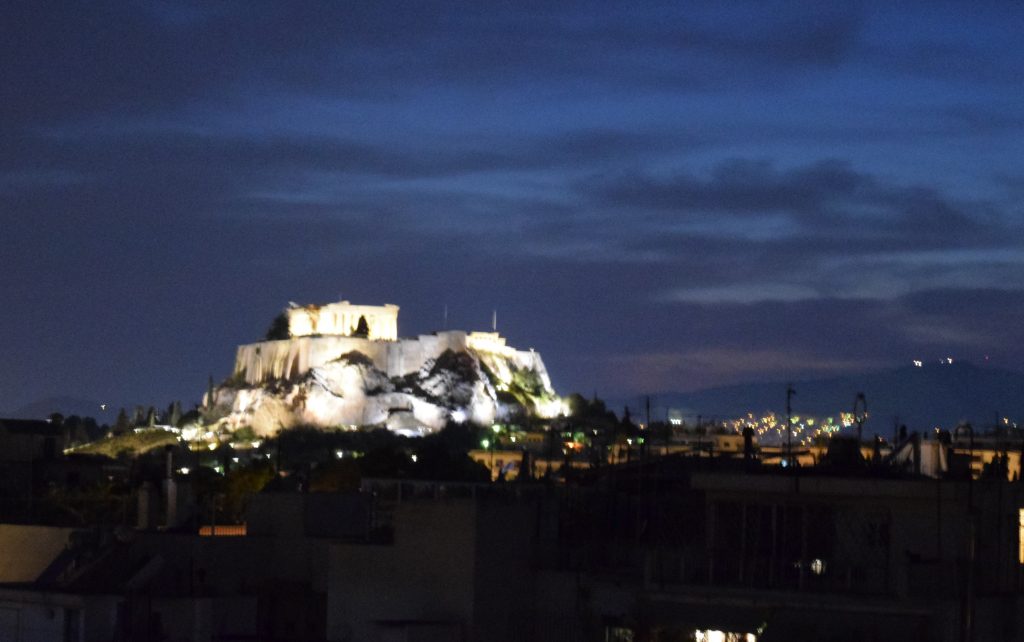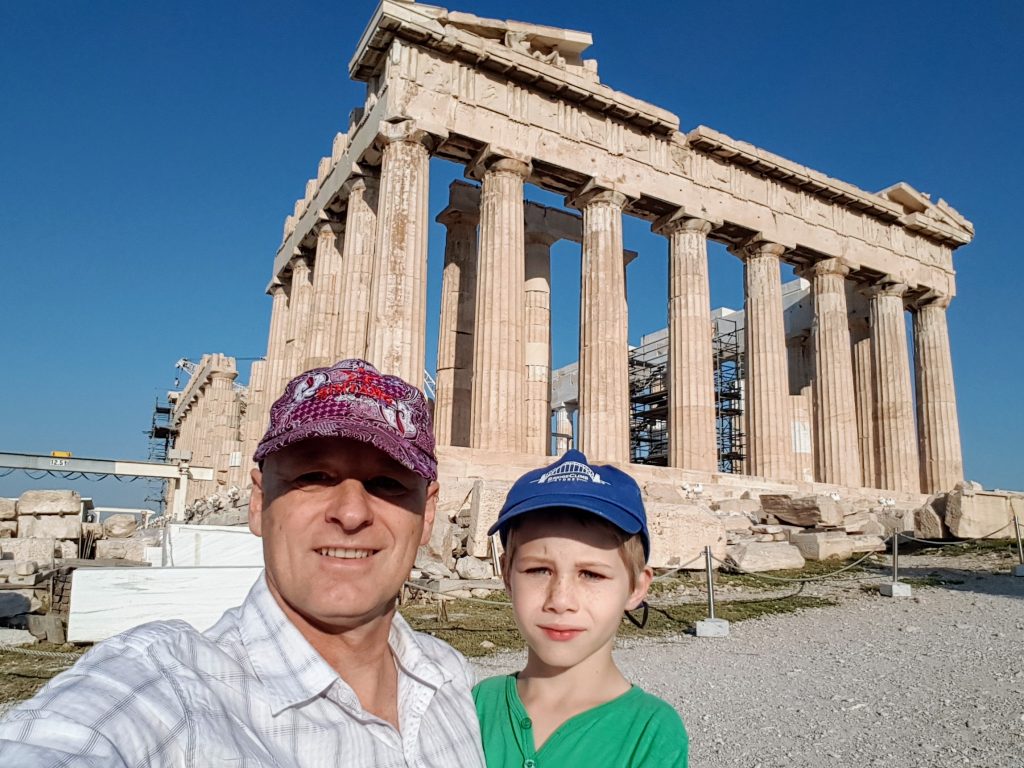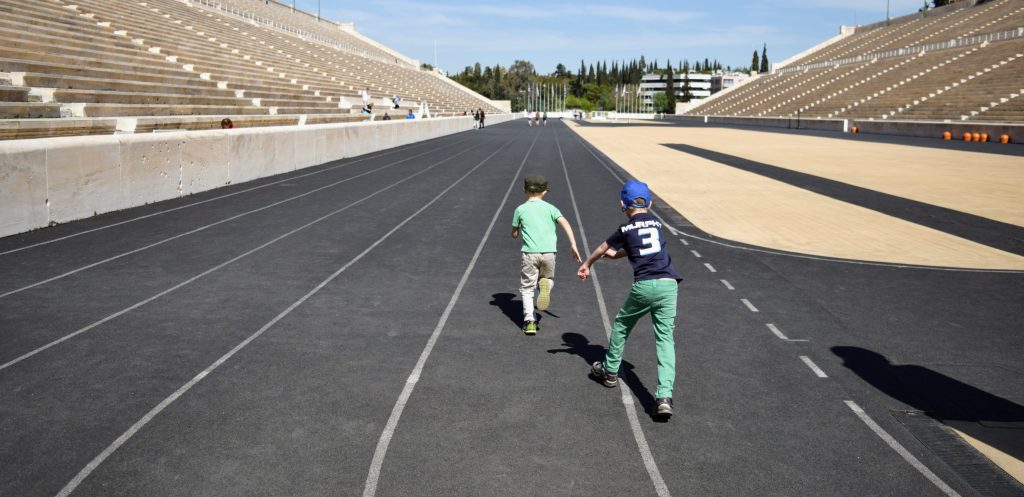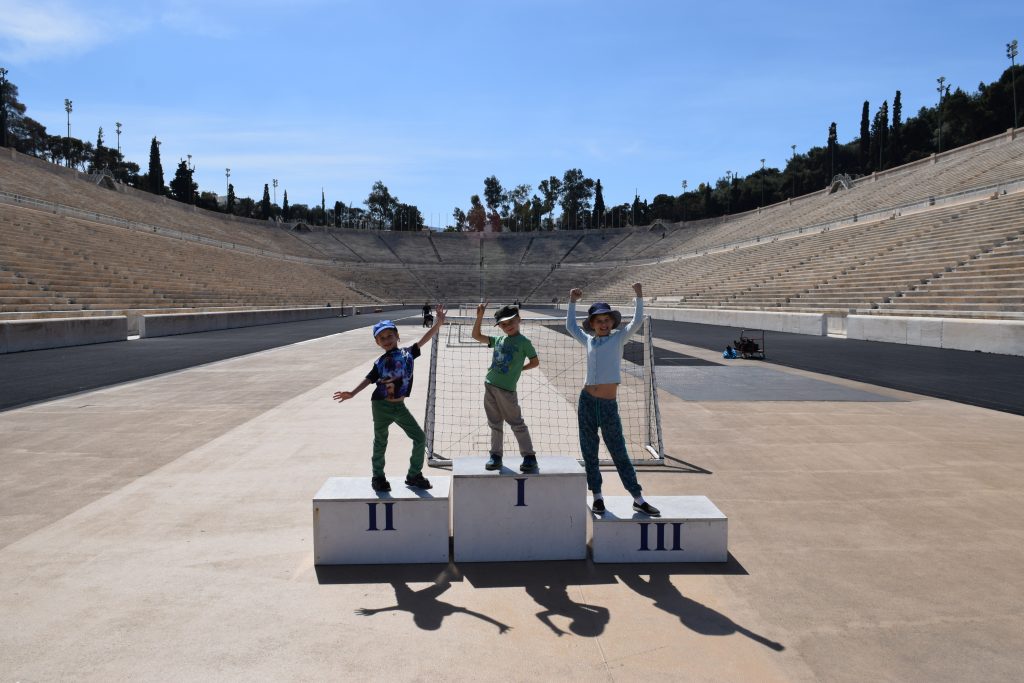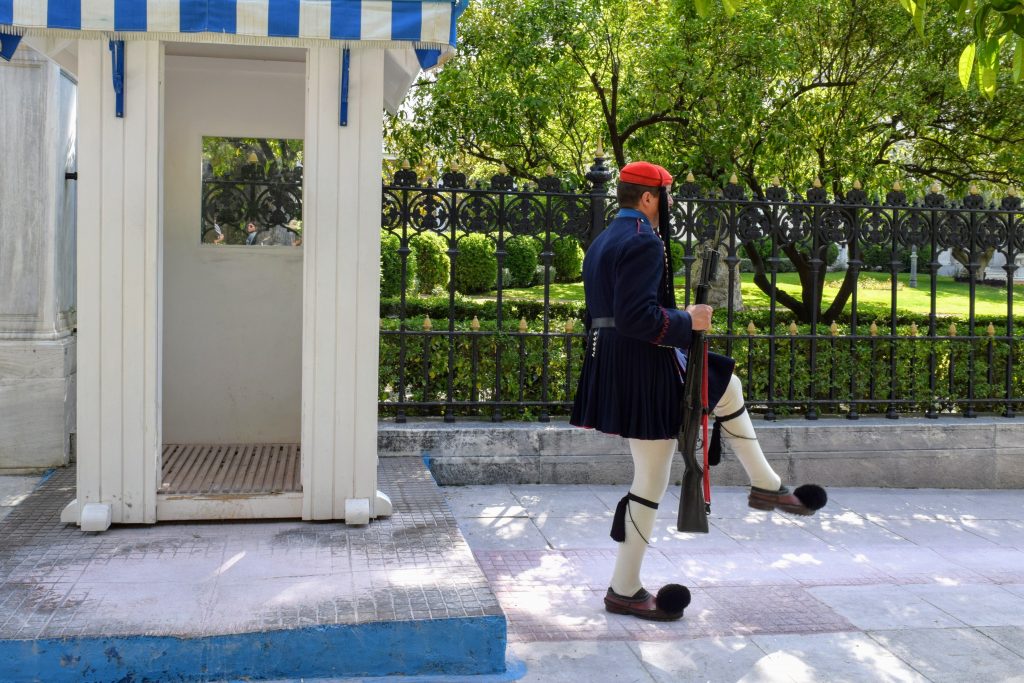The first stop on our European tour is Athens. We had a pretty rocky start to our visit here, but we soon got into travel mode.
Athens is a very busy and expansive city with many great things to see and do. We had fun exploring the narrow streets of the city for shopping, eating and coffee, but the main reason we were here was for the history!
During our four days here, we have seen our fair share of old ruins, as you would expect in Greece’s capital.
We are lucky to have our own personal Greek mythology enthusiast in Olive, who is like a tour guide knowing so much about the myths and legends of the Greek gods!
Although we know a little of Greece’s rich and long history, it still surprises us when we hear “…this church was built in fairly recent times, 1872!” That’s certainly not recent in Australia! If they call that recent, you know that there is a lot of history behind it.
We had a great introduction to Greece on a free City Walking Tour. We have become big fans of these. We don’t consider them to be free, but at least you don’t pay in advance and can pay less if it is no good or if you have to finish early (common for us as little legs struggle to keep up). They are generally great guides trying to impress for big tips, as in this case. We were guided around Athens by a very entertaining and knowledgeable guide, who had our three kids fascinated and following on her heels.
She showed us some really interesting parts of Athens that we would have missed otherwise, and gave us a great overview of Greek history and culture.
Here are some lessons we learned in the last few days that we want to share …
We were walking on history
If you dig anywhere in Athens you’ll find some ancient artefacts. One of the most recent finds was discovered during the preparation for the 2004 Olympic Games. They dug up some historic Roman baths while building the underground metro, and apparently this is quite common!
It’s Parthenon not Pantheon
It has taken us a couple of days to remember which is which (we will be visiting the Pantheon next week in Rome). The Parthenon is perched on the Acropolis (which translates as city on a hill) and is visible from all parts of town, including from our balcony window.
It is an amazing site, including huge columns, marble stairways, huge statues and more. We arrived at opening time to avoid the crowds. This was worth it, as we were able to wander around the site with few other people, and we watched the tour group crowds pour in as we left.
We were impressed by the size of the columns when we got up close. Smog is destroying the marble at a rapid rate, requiring extensive restoration.
They are trying to put the buildings back together after hundreds of years of gradual ruin. The main temple is pretty impressive, imagine what it was like when in one piece. If only the British didn’t steal a load of sections of the site. Fortunately, we can complete part of the scene when we visit the British museum in a couple of months. However the major destruction of the temple happened when it was blown up. The ruling Ottoman Turks thought it was a good idea to store their ammunition there during a battle with the Venetians in 1687.
The Olympics were reintroduced in 1859 not 1896.
Mr Zappas organised an Olympic games just for Greek people (just like the original) held in the same stadium, many years before the first modern Olympics in 1896.
It was great to walk (and run) in the footsteps of early Olympians where the Olympic revival began (the stadium was also used at the 2004 Olympics).
We were free to wander throughout the stadium, up the marble seating areas (the kids insisted on walking to the top), and through a mysterious tunnel to an Olympic museum, a highlight being the torches from each Olympic Games.
There is also a podium to stand on for a photo opportunity with an amazing back drop!
Another exciting fact is that the annual Athens marathon finishes here, in honour of the original marathon – a soldier ran from the town of Marathon (about 42 km away) to announce the victory of the Athens army, only to collapse and die.
Greek Guards walk like horses
The unique march of the Greek guards is designed to replicate the sound and movements of horses. You can watch them marching up the street in front of the President’s house and the Parliament. Their shoes actually have a horse shoe in the them plus 60 nails and weigh 2kg each!
They wear pretty skirts and pom-poms on their shoes too!
That’s just a sample of what we saw, history is everywhere here. To the kid’s school teachers – that’s next term’s history lessons done!

